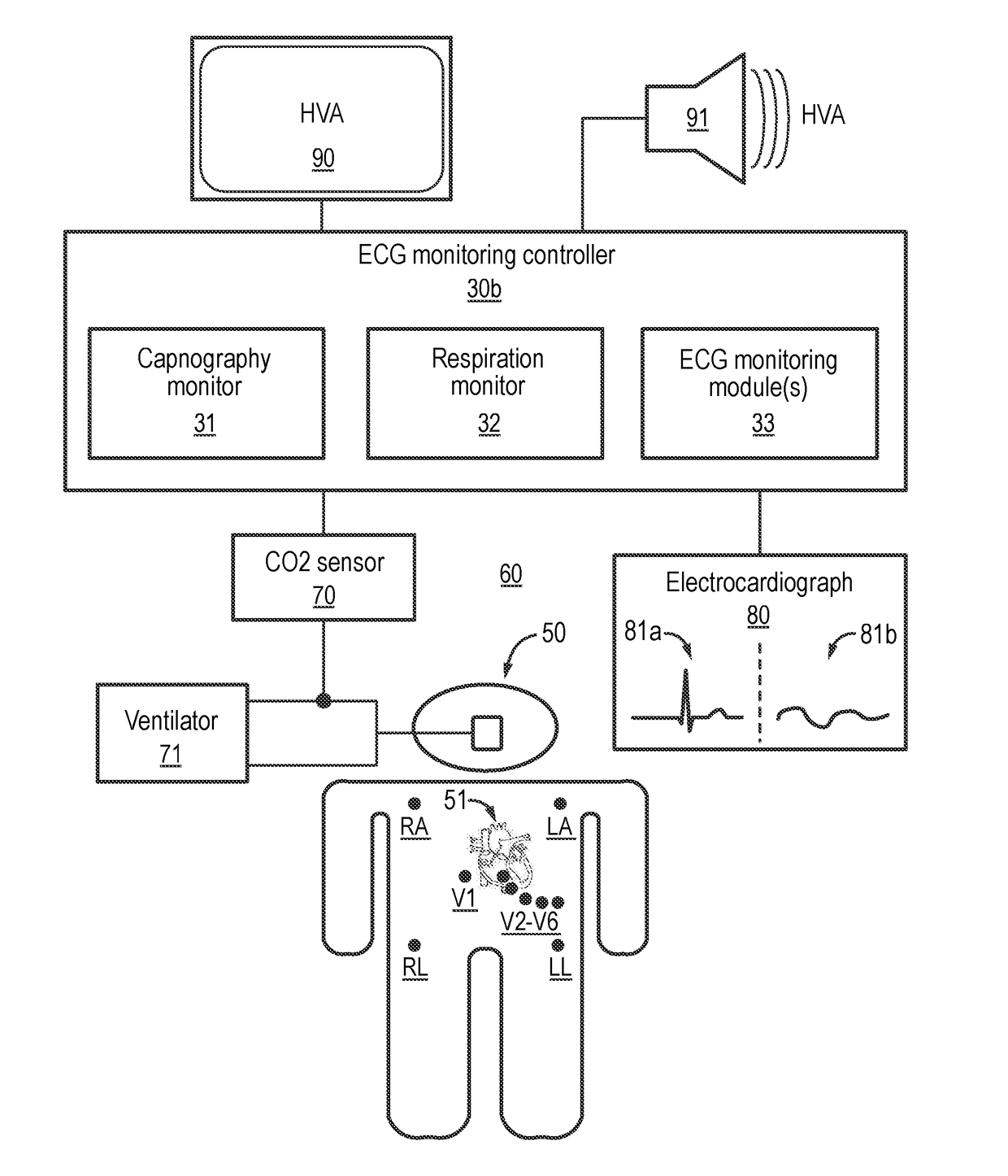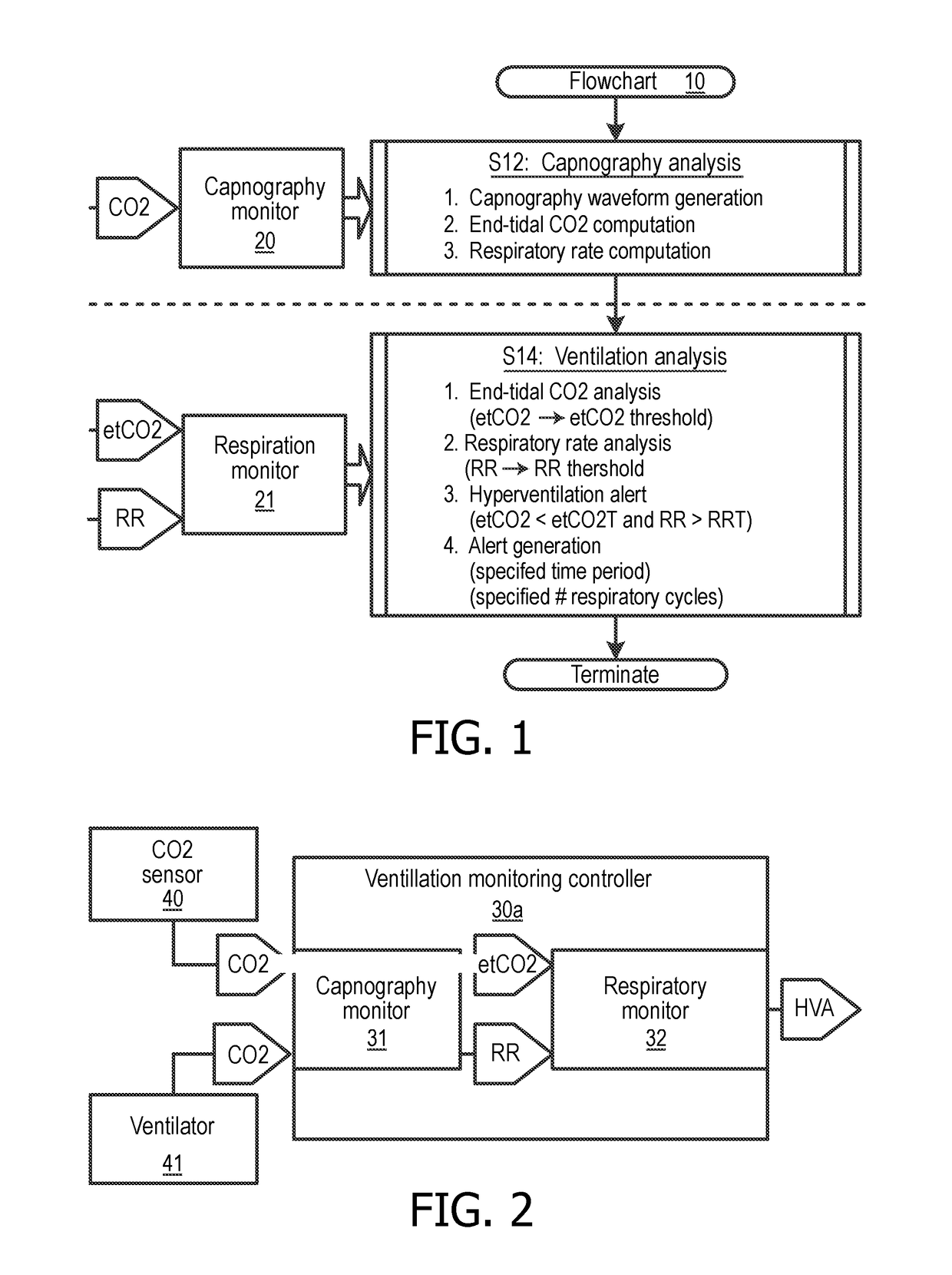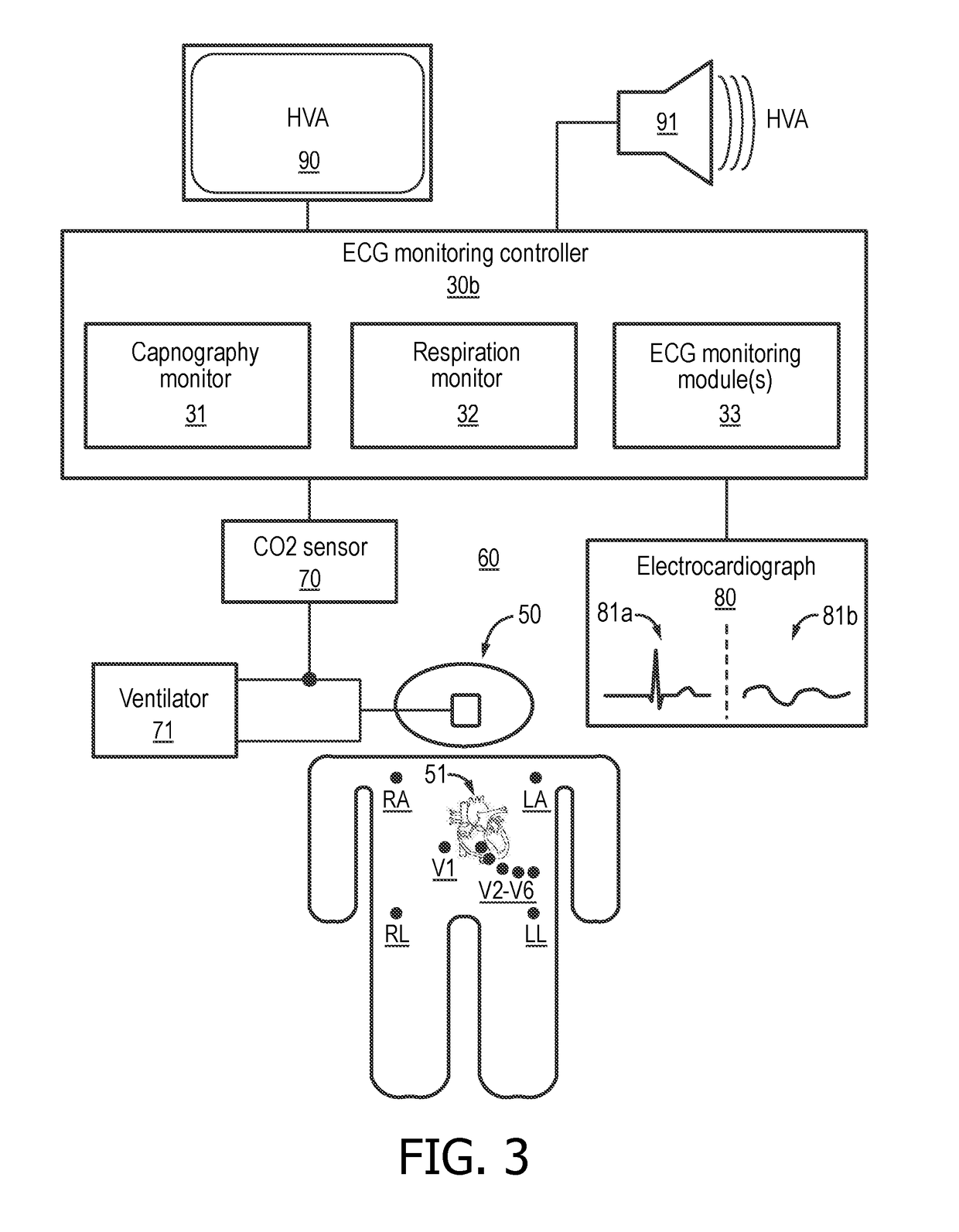Monitoring device with multi-parameter hyperventilation alert
a monitoring device and hyperventilation technology, applied in diagnostic recording/measuring, therapy, application, etc., can solve the problems of inadvertent hyperventilation, poor outcomes, and decrease the probability of successful resuscitation
- Summary
- Abstract
- Description
- Claims
- Application Information
AI Technical Summary
Benefits of technology
Problems solved by technology
Method used
Image
Examples
Embodiment Construction
[0020]To facilitate an understanding of the present disclosure, a flowchart 10 representative of a ventilation monitoring method of the present disclosure as executed by application modules in the form of a capnography monitor 20 and a respiration monitor 21 of the present disclosure will now be described herein. From this description, those having ordinary skill in the art will appreciate how to apply the inventive principles of the present disclosure to a variety of monitoring devices having a capnography capability for incorporating a multi-parameter hyperventilation alert capability based on an end-tidal CO2 expired by the patient and a respiration rate of a patient collectively indicating a hyperventilating ventilation of a patient.
[0021]Referring to FIG. 1, a stage S12 of flowchart 10 encompasses capnography monitor 20 analyzing a capnography waveform of the patient generated from carbon dioxide expired by the patient. In practice, capnography monitor 20 may implement any tech...
PUM
 Login to View More
Login to View More Abstract
Description
Claims
Application Information
 Login to View More
Login to View More - R&D
- Intellectual Property
- Life Sciences
- Materials
- Tech Scout
- Unparalleled Data Quality
- Higher Quality Content
- 60% Fewer Hallucinations
Browse by: Latest US Patents, China's latest patents, Technical Efficacy Thesaurus, Application Domain, Technology Topic, Popular Technical Reports.
© 2025 PatSnap. All rights reserved.Legal|Privacy policy|Modern Slavery Act Transparency Statement|Sitemap|About US| Contact US: help@patsnap.com



